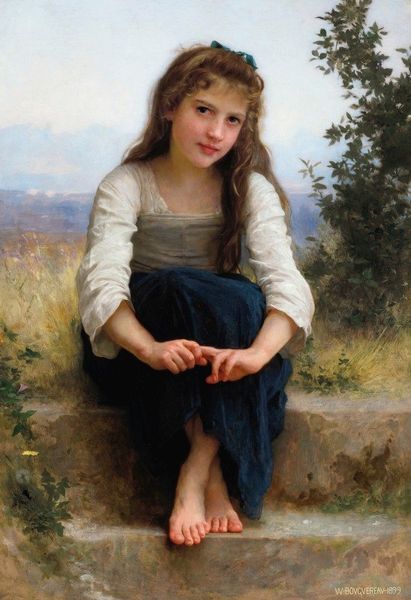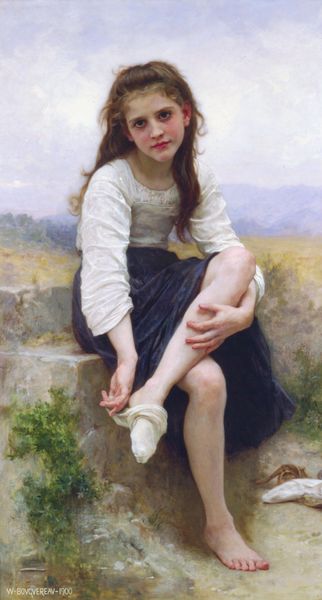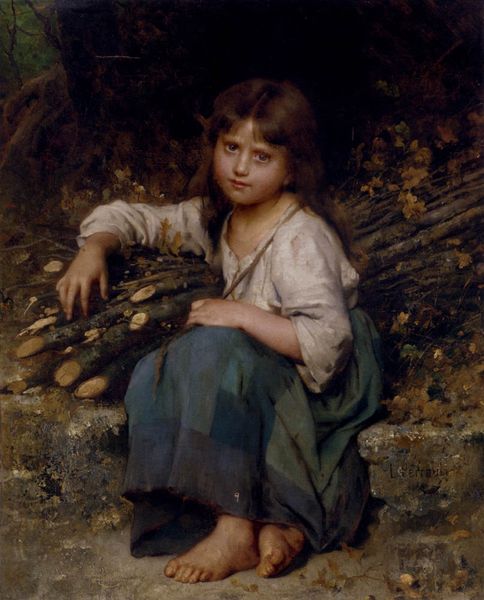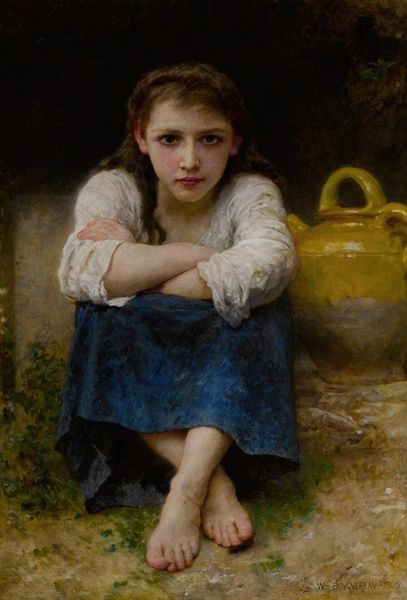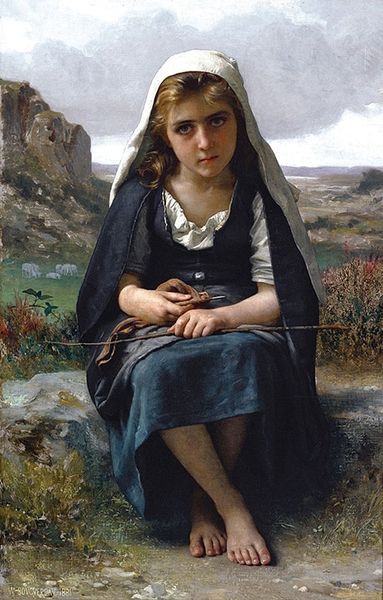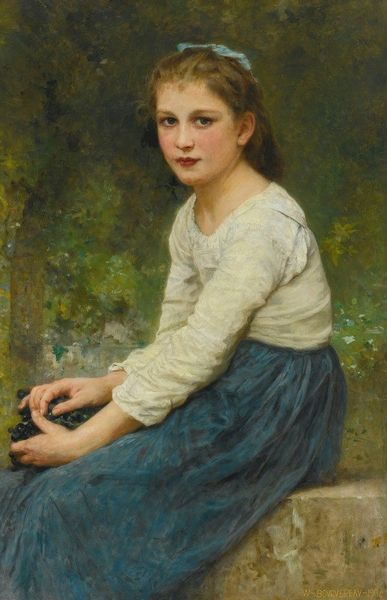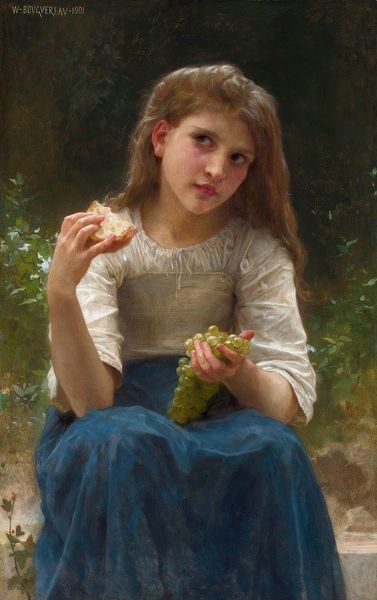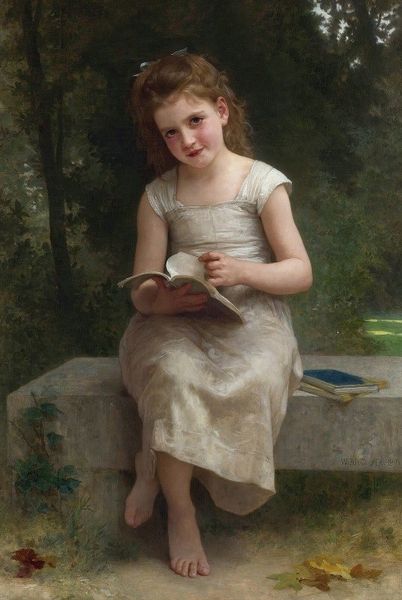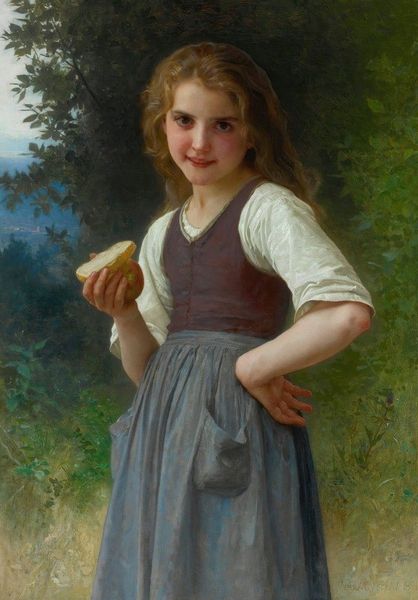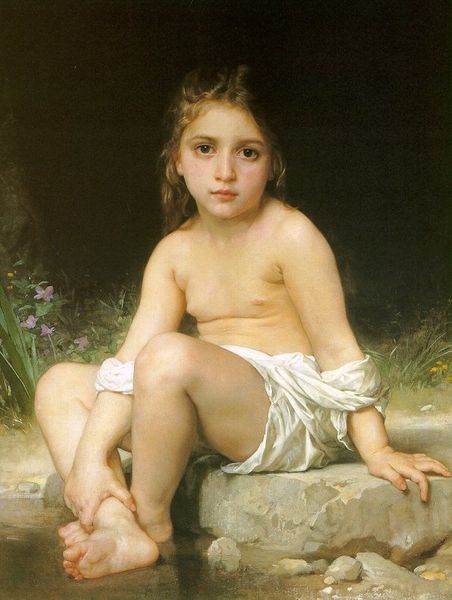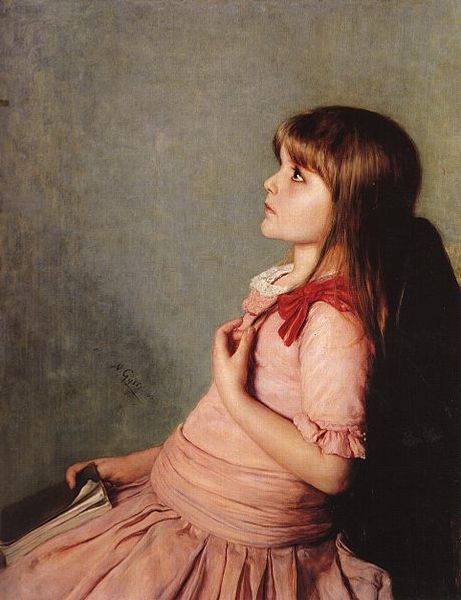
Copyright: Public Domain: Artvee
Curator: Welcome. Today we’re looking at William Bouguereau’s painting, "Le Crabe," created in 1869. Editor: Oh, what a gentle, quiet scene! There's a beautiful, serious-looking girl, absorbed in something down by the water's edge. It’s got that stillness of a summer afternoon. Curator: Exactly. Bouguereau, though celebrated, has also been critiqued for perpetuating idealised portrayals. This piece, rendered in oil, sits within academic art, embracing realism and romanticism while flirting with genre painting. We see figuration heavily emphasized against this gorgeous plein-air landscape backdrop. It beckons questions about representation, doesn't it? How are children, specifically girls, portrayed in the art historical record? Editor: It really does! But also, her complete focus... What is she poking at with that stick? A crab, yes, but the intensity she gives it makes the crab seem incredibly important in this moment. And look at the tones, very muted blues and browns, it brings a quiet to the whole painting. Almost as if everything is hushed and still just so she can do this work, you know? Curator: Absolutely. Consider the social dynamics—a young girl at leisure, but not overtly joyous. There’s labor implied even in her recreation. Are we seeing a staged realism or is it genuinely capturing childhood experiences? The bare feet suggest a freedom but also possibly speak to the realities of poverty for the time, or both. It’s really interesting to consider how context plays in here. Editor: That's an interesting idea to contemplate, how that freedom intersects with the economic realities for this child. It brings a heavier context, doesn’t it? She's there on the edge and the people behind her don’t even notice that she's found something to bring her joy at this particular time. Makes you consider, where is everyone going anyway? Curator: Bouguereau offers a tableau seemingly simple but deeply interwoven with his era's values and class dynamics. By unpacking such imagery, we reveal much about social hierarchies of his time as much as our expectations of childhood today. Editor: Mmh, well, either way, it is truly stunning, and, honestly, just makes me wonder, for myself: what was she actually thinking about in that very specific moment? What could make me that blissfully still right now?
Comments
No comments
Be the first to comment and join the conversation on the ultimate creative platform.

